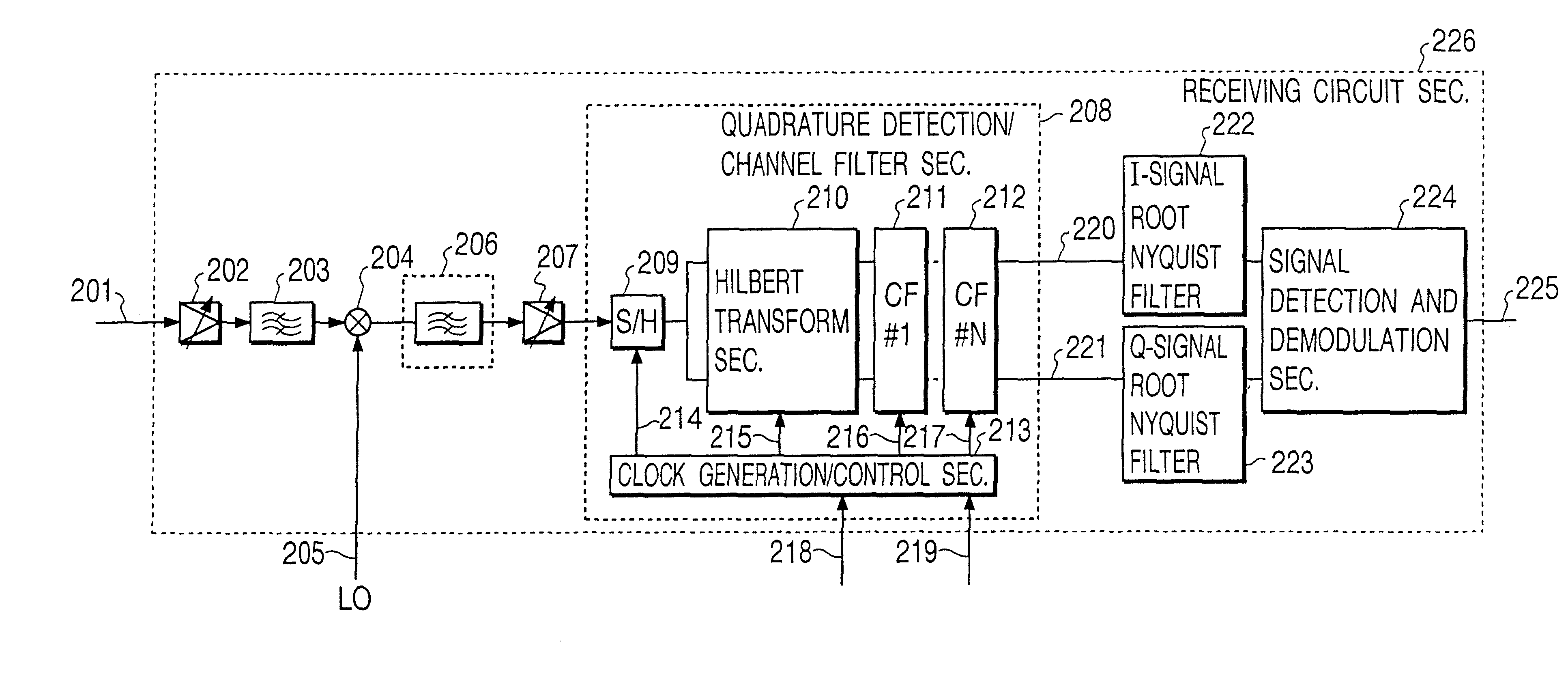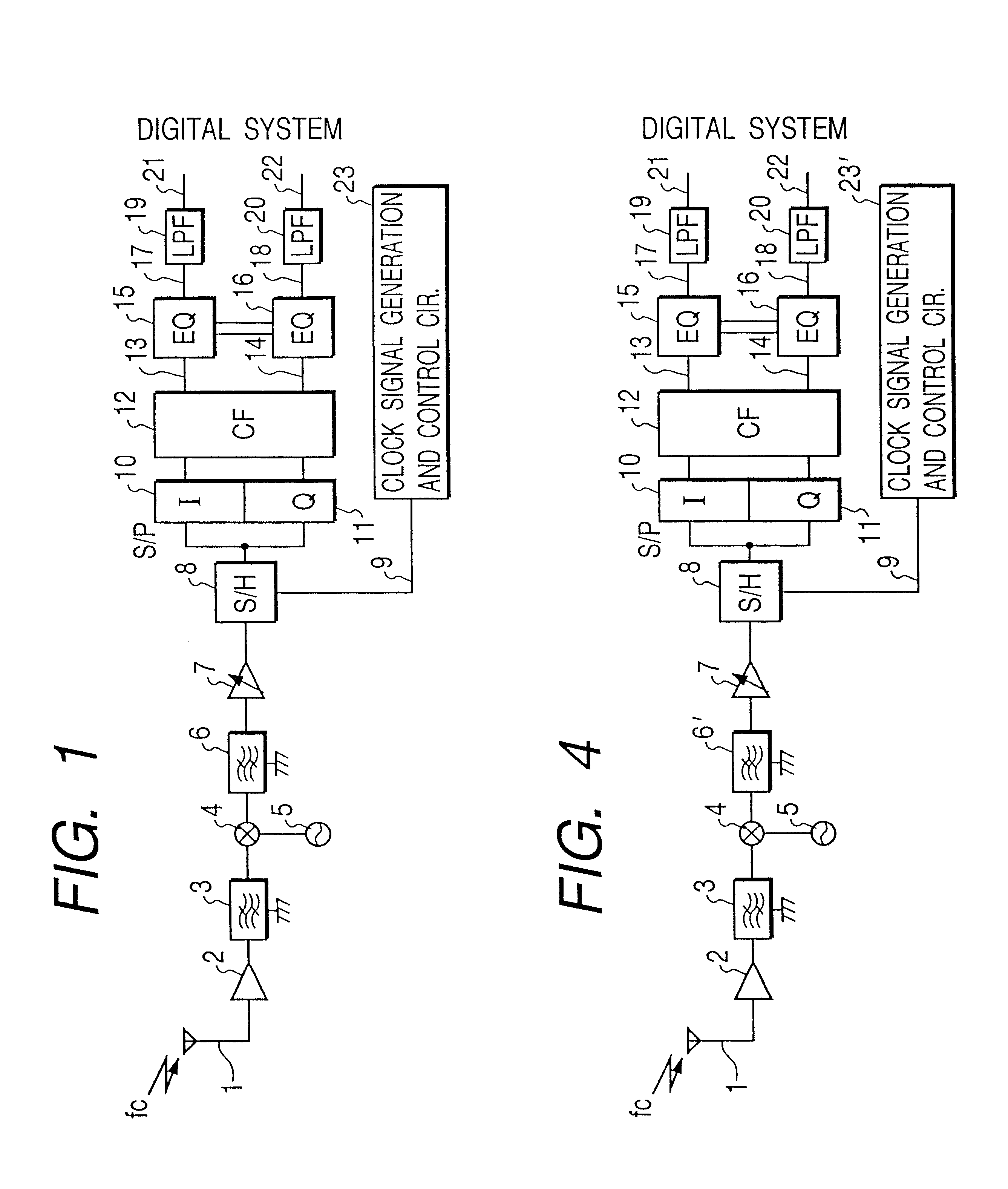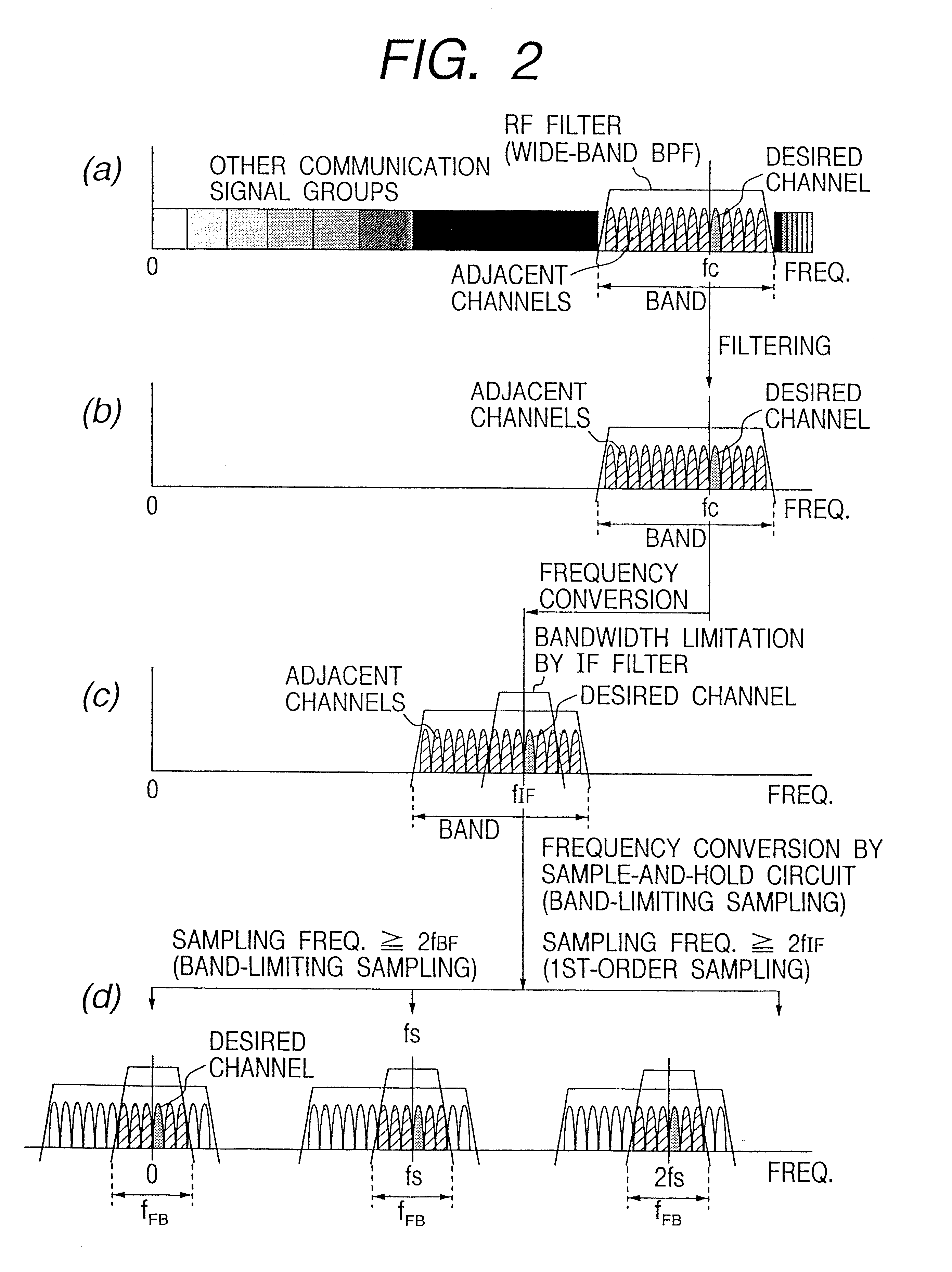Radio receiving apparatus for receiving communication signals of different bandwidths
ommunication signal technology, applied in the field of radio receiving apparatus, can solve the problems of large power consumption, difficulty in realizing a sharply attenuating channel filter for separating a desired channel, and difficulty in achieving a radio receiving apparatus with many parts
- Summary
- Abstract
- Description
- Claims
- Application Information
AI Technical Summary
Benefits of technology
Problems solved by technology
Method used
Image
Examples
first embodiment
FIG. 1 shows a configuration of the present invention. A received signal 1 obtained from an antenna is supplied to and amplified by a high-frequency amplifier 2. An output from the high-frequency amplifier 2 is supplied to a first bandpass filter 3 to separate only signals of all the channels of a relevant communications system from other radio signals. An output from the first bandpass filter 3 is supplied to a frequency converter 4 where it is subjected to frequency conversion by use of a local oscillation frequency f.sub.LO.
An output from the frequency converter 4 is supplied to a second bandpass filter 6 so as to obtain a channel filtering effect whereby image signals which occur in the frequency converter 4 are absorbed and only desired waves are allowed to pass therethrough. An output from the second bandpass filter 6 is supplied to an AGC amplifier 7 from which an amplified signal is outputted with a predetermined signal strength. This output is supplied to a sample-and-hold ...
embodiment 2
FIG. 4 shows a configuration of a second embodiment of the invention. A received signal 1 obtained from an antenna is supplied to and amplified by a high-frequency amplifier 2. An output from the high-frequency amplifier 2 is supplied to a bandpass filter 3 to extract only signals of all the channels of the relevant communications system and filter out other radio signals. An output from the bandpass filter 3 is supplied to a frequency converter 4 where it is subjected to frequency conversion by use of a local oscillation frequency f.sub.LO, i.e., a frequency at a boundary between a desired wave and a lower channel adjacent thereto.
An output from the frequency converter 4 is supplied to a first-stage lowpass filter 6' so as to obtain a channel filtering effect whereby image signals which occur in the frequency converter 4 are absorbed and only desired waves are allowed to pass therethrough. An output from the first-stage lowpass filter 6' is supplied to an AGC amplifier 7 from which...
embodiment 3
FIG. 7 shows a configuration of a third embodiment of the invention. In FIG. 7, an I-axis decimation circuit 24, a Q-axis decimation circuit 25, and an image-rejecting frequency conversion circuit 26 are interposed between the I-axis lowpass filter 19 and a digital system 21' or between the Q-axis lowpass filter 20 and a digital system 22' in the FIG. 4 configuration of the second embodiment of the invention. In this connection, the control system of the clock-signal-generation and control circuit 23' is augmented.
A received signal 1 obtained from an antenna is supplied to and amplified by a high-frequency amplifier 2. An output from the high-frequency amplifier 2 is supplied to a bandpass filter 3 to extract only signals of all the channels of the relevant communications system and filter out other radio signals. An output from the bandpass filter 3 is supplied to a frequency converter 4 where it is subjected to frequency conversion by use of a local oscillation frequency f.sub.LO,...
PUM
 Login to View More
Login to View More Abstract
Description
Claims
Application Information
 Login to View More
Login to View More - R&D
- Intellectual Property
- Life Sciences
- Materials
- Tech Scout
- Unparalleled Data Quality
- Higher Quality Content
- 60% Fewer Hallucinations
Browse by: Latest US Patents, China's latest patents, Technical Efficacy Thesaurus, Application Domain, Technology Topic, Popular Technical Reports.
© 2025 PatSnap. All rights reserved.Legal|Privacy policy|Modern Slavery Act Transparency Statement|Sitemap|About US| Contact US: help@patsnap.com



